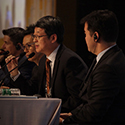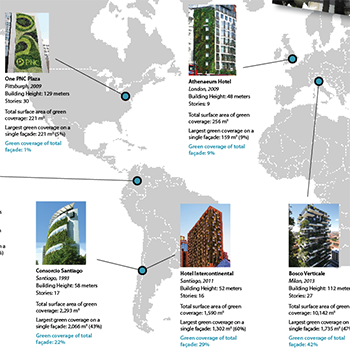Filter by
You must be a CTBUH Member to view this resource.
Newton Suites
Building
Completed, 2007
307994
residential
concrete
120.0 m / 394 ft
36
118
11,835 m² / 127,391 ft²
Construction Start
Completed
Usually involved in the front end design, with a "typical" condition being that of a leadership role through either Schematic Design or Design Development, and then a monitoring role through the CD and CA phases.
The Design Engineer is usually involved in the front end design, typically taking the leadership role in the Schematic Design and Design Development, and then a monitoring role through the CD and CA phases.
You must be a CTBUH Member to view this resource.
Usually involved in the front end design, with a "typical" condition being that of a leadership role through either Schematic Design or Design Development, and then a monitoring role through the CD and CA phases.
The Design Engineer is usually involved in the front end design, typically taking the leadership role in the Schematic Design and Design Development, and then a monitoring role through the CD and CA phases.
The Design Engineer is usually involved in the front end design, typically taking the leadership role in the Schematic Design and Design Development, and then a monitoring role through the CD and CA phases.
The main contractor is the supervisory contractor of all construction work on a project, management of sub-contractors and vendors, etc. May be referred to as "Construction Manager," however, for consistency CTBUH uses the term "Main Contractor" exclusively.
Singapore Visit
12 August 2009 - Event
Singapore Visit, August 2009
1 August 2009 - Building Tour

17 October 2016 | Singapore
The Sustainability of Density & Vertical Urbanism Q & A
Monday, October 17, 2016. Shenzhen, China. long Xiu, Chairman, Architectural Society of China; Mun Summ Wong, Woha; Antony Wood, Executive Director, CTBUH answer questions at...

16 September 2014
Green Walls in High-Rise Buildings
CTBUH Research
The latest CTBUH technical guide, Green Walls in High-Rise Buildings, provides a thorough investigation of the methods used around the world for implementation of vertical...
Newton Suites is a study in environmental solutions to tropical high-rise living. The design integrates several sustainable devices into a contemporary architectural composition, creating a sustainable, contemporary addition to the city skyline. The building sits at the edge of a high-rise zone and fronts a height-controlled area that affords expansive views of the central nature reserves; a rare luxury in densely built Singapore.
The exterior of the tower uses sun shading elements, patterned planes of textured panels and protruding balconies to create a façade that is functional yet expressive. The horizontal, metal expanded mesh sun shading screens the strong tropical sunlight. The angled mesh reduces solar radiation while permitting visual connection to the ground. The angled expanded mesh changes appearance with viewpoint, appearing anywhere between solid and transparent. This, combined with the cast shadows and interference patterns between the shadows and the mesh, gives the building a constantly shifting, blurred appearance depending on angle and time of day. The layers of sun shades also change the reading of the projections of the bay windows, a standard feature of Singapore apartments due to their contribution to developer profit and prescriptive regulations, embedding them in the language of the building.
Landscape is used as a material—rooftop planting, sky gardens and green walls are incorporated into the design. Creeper screens are applied to otherwise blank walls to create visual delight, absorb sunlight and carbon and create oxygen in the dense urban environment. Most available horizontal and vertical surfaces are landscaped; creating an area of landscaping that is 130% (110% planted) of the total site. Trees cover the car park, project from the sky gardens at every four levels and crown the building at the penthouse roof decks. The above-ground car park uses far less energy than an underground car park and is fully enclosed with creepers, absorbing exhaust emissions. The car park roof houses a substantial clubhouse with gym, steam room, party areas and 25-meter (82-foot) swimming pool with a glass overflow edge.

17 October 2016 | Singapore
The Sustainability of Density & Vertical Urbanism Q & A
Monday, October 17, 2016. Shenzhen, China. long Xiu, Chairman, Architectural Society of China; Mun Summ Wong, Woha; Antony Wood, Executive Director, CTBUH answer questions at...

18 September 2014 | Singapore
The Tropical Skyscraper: Social Sustainability in High Urban Density
Asia’s rapidly growing metropolises demand an alternative strategy for city planning and architecture that addresses the need to live appropriately and sustainability with our tropical...

23 October 2009 | Singapore
Newton Suites and Other Endeavors: High-Rise and the Organic Realm
As many projects struggle to justify the economic implications of ‘going green’ in the eyes of many developers, still others seem loaded with sustainable technologies...

16 September 2014
Green Walls in High-Rise Buildings
The latest CTBUH technical guide, Green Walls in High-Rise Buildings, provides a thorough investigation of the methods used around the world for implementation of vertical...

01 August 2009
Tall Buildings in Southeast Asia - A Humanist Approach to Tropical High-Rise
High-rise, high-density living has been embraced as a positive accommodation solution for many millions of people living in Asia's growing urban metropolis. This paper outlines...

01 August 2009
Tall Buildings in Southeast Asia - A Humanist Approach to Tropical High-Rise
High-rise, high-density living has been embraced as a positive accommodation solution for many millions of people living in Asia's growing urban metropolis. This paper outlines...
14 August 2009
Executive Director Antony Wood shares his recent experiences of a new and exciting Singapore which has, in a quiet, unpretentious way, been implementing social-urban policies.
Subscribe below to receive periodic updates from CTBUH on the latest Tall Building and Urban news and CTBUH initiatives, including our monthly newsletter. Fields with a red asterisk (*) next to them are required.
View our privacy policy